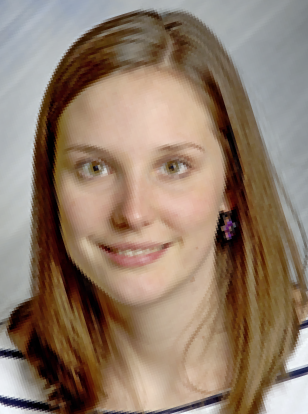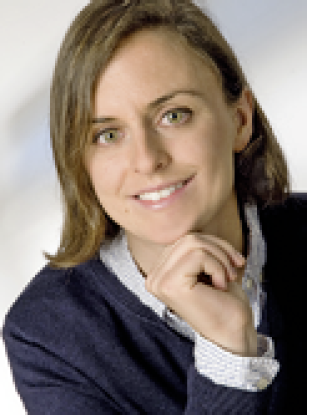Investigation of the Self Tempering Effect of Martensite by Means of Atom Probe Tomography
-
S. Sackl
Stephanie Sackl was born in 1989, in Austria. She studied Materials Science at the Montanuniversität Leoben. Currently she is working on her PhD thesis at the Department of Physical Metallurgy and Materials Testing in Leoben. The focus of her PhD is on the continuous heat treatment of heat treatable and high speed steels.Sophie Primig is the head of the „High Performance Materials and Steels“ group at the Department of Physical Metallurgy and Materials Testing, Montanuniversitaet Leoben, Austria. In her projects with both industrial and scientific focus, she studies advanced microstructure-property relationships that will enable the design of the future generation of structural materials.
Abstract
Self-tempering effects can be observed in steels with relatively high martensite start temperatures. After the formation of the first martensitic laths, carbon is able to diffuse in these laths during cooling, which can be attributed to sufficiently high temperatures. This effect cannot be observed in laths formed at lower temperatures. In steels containing up to 0.2 m.-% carbon, up to 90 % of the carbon atoms in the martensite segregate to dislocations during quenching. Due to its atomic resolution and sensitivity with respect to light elements, atom probe tomography is very well suited for the investigation of this phenomenon. In this study, the self-tempering effect in a quenched and tempered steel 42CrMo4 with a martensite start temperature of 310 °C is investigated by means of atom probe tomography.
Kurzfassung
Selbstanlasseffekte können in Stählen mit vergleichsweise höheren Martensit- Starttemperaturen beobachtet werden. Nach Entstehung der ersten Martensitlatten erfolgt in diesen Latten während der weiteren Martensitbildung aufgrund der ausreichend hohen Temperatur Kohlenstoffdiffusion. Dieser Effekt ist in Latten, die später bei tieferen Temperaturen gebildet werden, nicht vorhanden. Bei Stählen mit bis zu 0.2 m.-% können so während dem Abschrecken bis zu 90 % der Kohlenstoffatome im Martensit an Versetzungen segregieren. Aufgrund ihrer atomaren Auflösung und ihrer Sensitivität hinsichtlich leichter Elemente eignet sich die Atomsondentomographie sehr gut zur Untersuchung dieses Phänomens. In dieser Studie wurde der Selbstanlasseffekt in einem 42CrMo4 Vergütungsstahl, der eine Martensit-Starttemperatur von 310 °C aufweist, mittels Atomsondentomographie untersucht.
About the authors

Stephanie Sackl was born in 1989, in Austria. She studied Materials Science at the Montanuniversität Leoben. Currently she is working on her PhD thesis at the Department of Physical Metallurgy and Materials Testing in Leoben. The focus of her PhD is on the continuous heat treatment of heat treatable and high speed steels.

Sophie Primig is the head of the „High Performance Materials and Steels“ group at the Department of Physical Metallurgy and Materials Testing, Montanuniversitaet Leoben, Austria. In her projects with both industrial and scientific focus, she studies advanced microstructure-property relationships that will enable the design of the future generation of structural materials.
References / Literatur
[1] Sherman, D.H.; Cross, S.M.; Kim, S.; Grandjean, F.; Long, G.J.; Miller, M.K.: Metall. Mater. Trans. A 38 (2007) 1698. DOI: 10.1007/s11661-007-9160-310.1007/s11661-007-9160-3Search in Google Scholar
[2] Parker, E.R.; Interrelations of Composition, Transformation Kinetics, Morphology, and Mechanical Properties of Alloy Steels, 1977.10.1007/BF02667387Search in Google Scholar
[3] Thompson, S.W.: Mater. Charact. 77 (2013) 89. DOI: 10.1016/j.matchar.2013.01.00210.1016/j.matchar.2013.01.002Search in Google Scholar
[4] Speich, G.; Leslie, W.: Metall. Trans. A 3 (1972) 1043. DOI: 10.1007/BF0264243610.1007/BF02642436Search in Google Scholar
[5] Thomson, R.C.; Miller, M.K.: Appl. Surf. Sci. 94 – 95 (1996) 313. DOI: 10.1016/0169-4332(95)00392-410.1016/0169-4332(95)00392-4Search in Google Scholar
[6] Pereloma, E.V.; Miller, M.K.; Timokhina, I.B.: Metall. Mater. Trans. A 39 (2008) 3210. DOI: 10.1007/s11661-008-9663-610.1007/s11661-008-9663-6Search in Google Scholar
[7] Wilde, J.; Cerezo, A.; Smith, G.D.W.: Scr. Mater. 43 (2000) 39. DOI: 10.1016/S1359-6462(00)00361-410.1016/S1359-6462Search in Google Scholar
[8] Xiaotian, W.; Yinliang, Y.; Tanhua, S.: J. Chinese Rare Earth Soc. 8 (1990) 286.Search in Google Scholar
[9] Zhou Huijiu, Li Yongjun, Qi Jingyuan, in:, Metals Soc (Book 310), 1984, pp. 111 – 119.Search in Google Scholar
[10] Sherman, D.H.; Cross, S.M.; Kim, S.; Long, G.J.; Miller, M.K.: Metall. Mater. Trans. A 38 (2007) 1698.10.1007/s11661-007-9160-3Search in Google Scholar
[11] Ooi, S.W.; Cho, Y.R.; Oh, J.K.; Bhadeshia, H.K.D.H.: in:, Proc. Int. Conf. Martensitic Transform. ICOMAT-08, 2009, pp. 179 – 185.Search in Google Scholar
[12] Matsuda, H.; Mizuno, R.; Funakawa, Y.; Seto, K.; Matsuoka, S.; Tanaka, Y.: J. Alloys Compd. 577 (2013) S661. DOI: 10.1016/j.jallcom.2012.04.10810.1016/j.jallcom.2012.04.108Search in Google Scholar
[13] Miller, M.K.; Russell, K.F.: Ultramicroscopy 107 (2007) 761. DOI: 10.1016/j.ultramic.2007.02.02310.1016/j.ultramic.2007.02.023Search in Google Scholar PubMed
© 2015 Walter de Gruyter GmbH, Berlin/Boston, Germany
Articles in the same Issue
- Contents
- Editorial
- Editorial
- The Quality of Prepared Specimens of Si-Wafers for Raman Spectroscopy
- Investigation of the Self Tempering Effect of Martensite by Means of Atom Probe Tomography
- Preparation of Carbide-Free Bainitic Steels for EBSD Investigations
- LCF Coupling Failure in a Two-Feet Light Railway
- Top-ten downloads / Picture of the month
- Top-Ten Article Downloads
- Picture of the Month
- PM-News
- PM-News
- Meeting diary
- Meeting diary
Articles in the same Issue
- Contents
- Editorial
- Editorial
- The Quality of Prepared Specimens of Si-Wafers for Raman Spectroscopy
- Investigation of the Self Tempering Effect of Martensite by Means of Atom Probe Tomography
- Preparation of Carbide-Free Bainitic Steels for EBSD Investigations
- LCF Coupling Failure in a Two-Feet Light Railway
- Top-ten downloads / Picture of the month
- Top-Ten Article Downloads
- Picture of the Month
- PM-News
- PM-News
- Meeting diary
- Meeting diary

